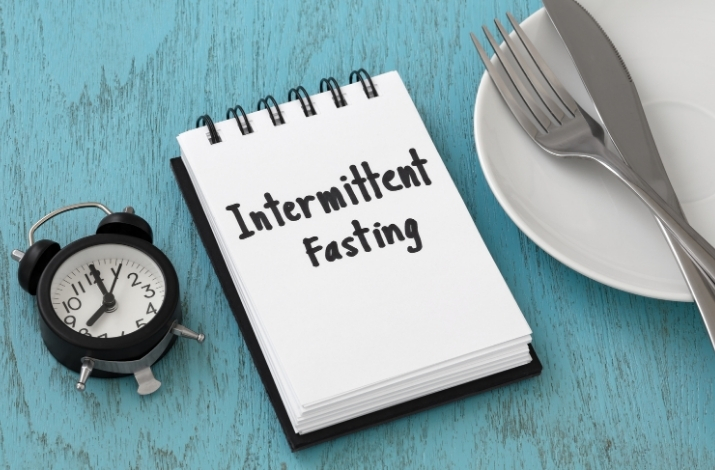Maximizing the Benefits of Fasting

Maximizing the Benefits of Fasting
It’s human nature to seek optimal output for a given input, and our efforts in fasting should be no exception.
Because elevated insulin is one of the most relevant factors in being lean and healthy, a rational strategy is to follow a dietary plan that incorporates periods of not eating to help insulin stay low. This perspective immediately suggests that frequent eating is less effective than less frequent eating—indeed, three meals per day is better than six [1]—but are fewer than three meals better still? Very likely.
Studies have shown that regular fasting can improve insulin sensitivity [2], slow the processes of aging [3], lengthen lifespan [4], reduce cognitive decline [5], and much more. In spite of these boasted benefits, anyone who has tried fasting knows that it can be difficult and uncomfortable. So, if you’re going through the pain, how can you maximize the gains?
I’d like to offer three simple ways for you to optimize your fasting experience.
1. Combine Your Fast with Exercise
My research team recently completed a study where the participants were required to complete two 36-hour fasts. One of the fasts started with running on a treadmill for about 45-60 minutes and the other did not. We took regular blood samples and mood assessments throughout each fast, and we found some interesting differences between the two conditions. First, we learned that starting your fast with exercise can enhance your ketone production by about 43%. This is really great news because (just like money in your bank account) more is better. At healthy levels, ketones can be used for energy and act as signaling molecules for significant health improvements [6].
In addition to more ketone production, we also discovered that most people achieved “ketosis” (defined as a beta-hydroxybutyrate level of 0.5 mM) at about 21 hours of fasting when they didn’t exercise. However, when exercise was added, ketosis was achieved in about 17.5 hours of fasting. This means that you can start enjoying the benefits of fasting by flipping your metabolic switch 3.5 hours sooner.
These benefits sound great, but you may think that exercising while fasting will leave you feeling awful for the rest of your fast. There’s more good news. Our participants completed a survey to assess their mood every two hours, and we found that combining a fast with exercise didn’t make them more hungry, uncomfortable, or cranky than when they fasted without exercise. The take-home message here is that you can get extra benefits without extra pain.
2. Try Fasting in the Evening
This strategy may not appeal to everyone, but research shows that people who eat in the morning have healthier blood lipid profiles, better control of their blood sugars, and they tend to weigh less than those who eat late in the day. Other benefits of early eating and late fasting include reduced inflammation, improved circadian rhythm, better cellular stress resistance, and even a healthier gut [7].
At a time when we are encouraged to stay physically distant, this may be your best chance to squeeze a little more benefit from your fast without compromising your social life.
3. Starting and Breaking Your Fast
The food you use to start and break your fast can have a huge impact on the fast itself. Here, it’s best to follow the council of Dr. Ben Bikman who frequently says, “Control carbs, prioritize protein, and fill with fat.” By starting your fast with a low-carb, high-protein/high-fat meal, you set your body up to kick into ketosis quickly. If you eat a lot of carbs, just be aware that you are filling up your liver with a bunch of glycogen that you will have to fast and/or exercise away before your body will turn to fat for its fuel.
Breaking your fast with a similar low-carb, high-protein/high-fat meal can help keep your body in a state of ketosis. This means you continue to reap many of the benefits of fasting, but you get the satisfaction of a full stomach. A few of my favorite fast-breaking snacks include hard-boiled eggs (perfect for those on-the-go), a low-carb, high-protein/high-fat shake (if you’re on this website, you know the best place to get this one), or even a handful of nuts.
Concluding Thoughts
If you are a regular faster, these tips may help you take your fasting to the next level. If you’re new to fasting, welcome aboard! Regardless of your fasting history, we can all benefit from optimizing our fasts by combining it with exercise, fasting in the evening, and choosing our pre- and post-fast fuels wisely.
At the end of the day, the best eating practices and exercise regimens for you are the ones you’re actually going to stick to. As you invest in healthy habits that fit your lifestyle, you will reap incredible dividends. Remember: your body is incredibly capable of adapting to the demands you impose on it, so push it out of its comfort zone every once in a while and enjoy the benefits.
Landon Deru is a Ph.D. student at Brigham Young University. He is currently studying the health effects of fasting, nutrition, and exercise. You can find him on Instagram: @landon_deru
For more information on fasting, please visit our friends at The Fasting Method.
References
1 Hutchison, A. T. and Heilbronn, L. K. (2016) Metabolic impacts of altering meal frequency and timing – Does when we eat matter? Biochimie. 124, 187-197
2 Sutton, E. F., Beyl, R., Early, K. S., Cefalu, W. T., Ravussin, E. and Peterson, C. M. (2018) Early Time-Restricted Feeding Improves Insulin Sensitivity, Blood Pressure, and Oxidative Stress Even without Weight Loss in Men with Prediabetes. Cell metabolism. 27, 1212-1221 e1213
3 Wegman, M. P., Guo, M. H., Bennion, D. M., Shankar, M. N., Chrzanowski, S. M., Goldberg, L. A., Xu, J., Williams, T. A., Lu, X., Hsu, S. I., Anton, S. D., Leeuwenburgh, C. and Brantly, M. L. (2015) Practicality of intermittent fasting in humans and its effect on oxidative stress and genes related to aging and metabolism. Rejuvenation Res. 18, 162-172
4 Anton, S. D., Moehl, K., Donahoo, W. T., Marosi, K., Lee, S. A., Mainous, A. G., 3rd, Leeuwenburgh, C. and Mattson, M. P. (2018) Flipping the Metabolic Switch: Understanding and Applying the Health Benefits of Fasting. Obesity (Silver Spring). 26, 254-268
5 Anson, R. M., Guo, Z., de Cabo, R., Iyun, T., Rios, M., Hagepanos, A., Ingram, D. K., Lane, M. A. and Mattson, M. P. (2003) Intermittent fasting dissociates beneficial effects of dietary restriction on glucose metabolism and neuronal resistance to injury from calorie intake. Proceedings of the National Academy of Sciences of the United States of America. 100, 6216-6220
6 Newman, J. C. and Verdin, E. (2017) beta-Hydroxybutyrate: A Signaling Metabolite. Annual review of nutrition. 37, 51-76
7 Paoli, A., Tinsley, G., Bianco, A. and Moro, T. (2019) The Influence of Meal Frequency and Timing on Health in Humans: The Role of Fasting. Nutrients. 11
This article is for informational and educational purposes only. It is not, nor is it intended to be substitute for professional medical advice, diagnosis, or treatment and should never be relied upon for specific medical advice.


















